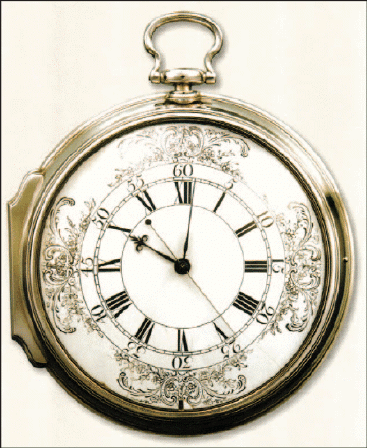John Harrison
|
At birth God gives you just
so much driving time - then you die.
D Vautier |
D Vautier
6/2019
 John Harrison was born into a carpenter family but
decided to develop clocks and he was really good at it. He lived a quiet life getting married in 1718 (Sobel, 67),
remarried in 1726 and had two children and could have lived out a quiet successful
existence making great clocks.
John Harrison was born into a carpenter family but
decided to develop clocks and he was really good at it. He lived a quiet life getting married in 1718 (Sobel, 67),
remarried in 1726 and had two children and could have lived out a quiet successful
existence making great clocks.
But fate had other
plans. This quite remarkable man propelled the world into the new
area of discovery in precision clock design starting in the early 1700s.
He had an uncanny ability to solve clock problems, problems which
had dogged inventors for at least 300 years.
To begin with, Harrison noticed that pendulum
clocks were very sensitive to temperature changes because the length of
the arm changed with temperature so he invented the gridiron. It
consisted of alternate lengths of brass and steel with different
expansion rates. Using this
approach he was able
to develop a pendulum clock accurate to within seconds per month (Cronin,
30). He was also able to
invent a better escapement for pendulum clocks.
But it gets better. The world needed seaworthy clocks able to withstand temperature,
pressure, water and a great deal of shaking and radical movement that
came along with sea storms. Harrison
put his mind to developing chronometers or sea clocks (also called
regulators). For the next 20 years he developed three sea clocks the H1, the
H2 and H3. These were
monster clocks some weighing 75 pounds but H1 was probably capable of
performing well at sea and probably even able to win the £20,000
offered by the British Board of Longitude.
But Harrison decided not to compete because he felt he could do better.
By 1750 Harrison
fortunately gave up his crazy fixation on big sea clocks and realized that he could
get the same accuracy by designing and improving upon a smaller clocks.
The culmination of his efforts resulted in the H4 which he completed in 1759.
It looked like a big pocket
watch five inches wide, and it
did in fact achieve incredible accuracy because his invention consisted of a
number of brilliant improvements in design. Harrison
was at first denied his £20,000 prize but eventually received it. He
died soon after in 1776 but he left a huge legacy. Not only had he
drawn much attention to world discovery and exploration by solving the
longitude problem, but he inspired many other inventers to improve on
the watch-making ideas he had introduced.
The H4 was far too valuable to be entrusted to any
additional ocean explorations so the board of longitude commissioned Larcum
Kendall to make several copies the K1, K2
and K3. These three
chronometers were involved in some fascinating adventures. The K1 went with captain James Cook on his second voyage who
became totally convinced of its capability. Cook again took K1 with
him on his last voyage. The
instrument survived but Cook did not. K1 was eventually recovered.
K2
went with captain Bligh aboard the Bounty
and wound up on Pitcairn island. This
is how Fletcher Christian determined that the island was unchartered.
Eventually K2 also was recovered and made itís way back to England.
K3 went off with Vancouver
to explore the northwest part of North America. Vancouver
did not particularly like the K3 and used it reluctantly to
verify the lunar distance method that he preferred (Bown,129) although he may have
claimed otherwise. Even though his
descriptions and methods were confusing, still his
longitudes turned out to be remarkably accurate, perhaps because of K3. But
then Vancouver was determined to use all existing methods available at
that early time in navigation (1792) including Jupiter's
moons.
The H1 in all it's ugly glory

The famous and beautiful H4.
|
 John Harrison was born into a carpenter family but
decided to develop clocks and he was really good at it. He lived a quiet life getting married in 1718 (Sobel, 67),
remarried in 1726 and had two children and could have lived out a quiet successful
existence making great clocks.
John Harrison was born into a carpenter family but
decided to develop clocks and he was really good at it. He lived a quiet life getting married in 1718 (Sobel, 67),
remarried in 1726 and had two children and could have lived out a quiet successful
existence making great clocks.


